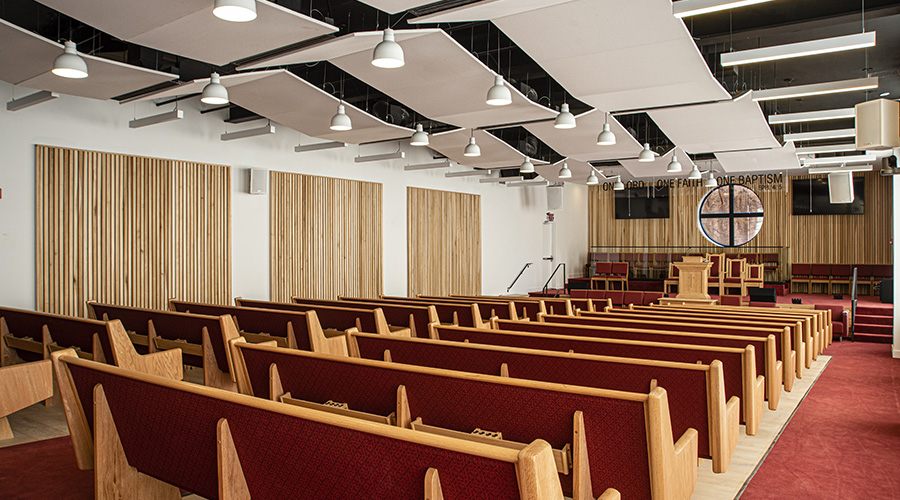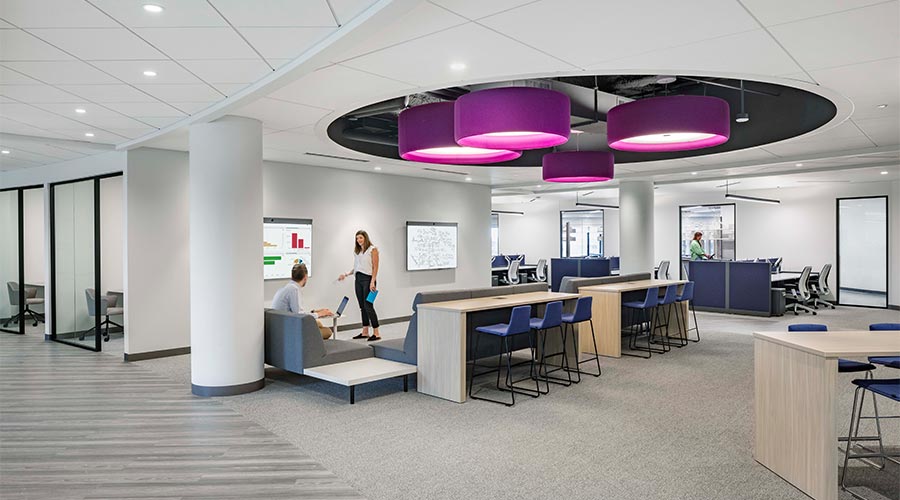Power Quality Risk Management
Health care facility executives should be familiar with common power problems.
In a hospital setting, lives depend on electrical power. Hospitals have a responsibility to the public to provide a reliable power system. Unfortunately, however, redundant and reliable systems are too often cut back to code minimums during the value engineering phase of a project.
From assessing the quality of the utility company service to providing uninterruptible power supply (UPS) systems to protect high-tech equipment, adopting a risk-management approach ensures that emergency services will be available when they are needed. This is the most effective way to maintain power quality in health care facilities.
Diagnosing Power Problems
Five types of power problems are most common in health care and other institutional facilities:
- Outages: Outages occur when utility power goes out and emergency generators come on line.
- Brownouts and sustained over-voltage: Brownouts occur when the electrical voltage level dips below or rises above the specified range. Equipment is still powered but is often damaged as the voltage level is lower or higher than the equipment can handle.
- Voltage surges: These short-period increases in voltage — commonly referred to as voltage spikes — can damage electronics within medical equipment and data servers.
- Noise: Electrical noise consists of small but rapid and repetitive power fluctuations that cause an inconsistent flow of a sine wave of power to equipment.
- Harmonics: Harmonics are voltages or currents at frequencies that are a multiple of the fundamental frequency. In most systems, the fundamental frequency is 60 hertz. Harmonics can cause overloading of conductors and transformers and overheating of motors, which can result in a fire. The cost to replace this equipment, as well as a loss of productivity because of system downtime, are other causes for concern.
Because any of these problems can cause chaos in the electrical system of a health care facility, emergency power systems should be designed so that each potential problem is taken into account and addressed, if at all possible. The design engineer is responsible for passing on any information regarding critical facility systems to the facility executive and architect during the design process, as well as ensuring that this information is received and understood.
The utility company’s service design plays a significant role in the quality of the power system to the building. The design engineer should contact the utility company to determine the quality and reliability of the utility system in that area. The utility has records of downtime for each region and will be able to assist in this process.
Working With Utilities
Health care facility executives should ensure that the quality of the system starts at the utility service to the site. Even when this analysis is performed, problems can arise. In August 2003, a huge blackout in the northeastern section of the United States tested the emergency power systems in many facilities. As a result, many facilities discovered problems with a variety of systems. Equally mixed results came out of Florida during the 2004 hurricane season. These are not the type of trial-by-fire scenarios that any facility wants to deal with. Most utility power systems are reliable, but during catastrophic events the hospital must be able to operate its critical systems independent of the utility.
Facility executives can mitigate power quality concerns by asking the utility the following questions:
- If the line that normally serves the facility fails, does the utility provide automated switching to restore power?
- If automated switching is not available, can the facility be connected to a different substation through manual switching or sectionalizing?
- How old is the utility’s infrastructure, and what is the nature of its construction? If it’s an overhead line, when were the poles, insulators and power lines last replaced? If the utility has an underground feeder, what is the age of the cable and what kind of insulation is used?
In addition, the facility executive should ask to see the facility’s service record to determine if the quantity and duration of outages that the facility incurs are higher than normal.
The first and most critical step to mitigating power quality problems is to support life-safety systems in the event of a fire or power failure. Power generators are the heart of the electrical system. They provide emergency power for equipment that ranges from life-safety air systems to high-tech monitoring equipment for critically ill patients.
Redundancy of generation systems is important to the function of the overall system and should be addressed early in the design process. Multiple generators should be provided if at all possible.
Even with multiple generators and a redundant design scheme, problems with ancillary equipment, such as fuel or air systems for the generators, can shut a generator down as quickly as poor maintenance on the generator itself. Each generator and emergency system component needs to be evaluated as a critical piece of the overall system.
For optimal performance, emergency generators should be tested frequently and thoroughly. It is most beneficial when the testing conditions simulate an actual outage.
Up to Code
The essential electrical system consists of alternate sources of power, connected distribution systems and ancillary equipment. According to the National Electrical Code (NEC), the essential electrical system ensures continuity of electrical power to designated areas and functions of a health care facility during disruption of normal power sources, while minimizing disruption within the internal wiring system.
Transfer switches serve the essential electrical system of any hospital. Generators provide the power, but transfer switches actually switch the power source from normal to emergency if they detect loss of emergency power or power fluctuations.
To help ensure a reliable power system, transfer switches in specific types of health care facilities are also required to serve the three separate branches of the emergency power system. These three branches are defined by NEC as follows:
- The life safety branch is a subsystem of the emergency system, which consists of feeders and branch circuits. It is intended to provide adequate power to ensure the safety of patients and personnel and is automatically connected to alternate power sources during interruption of the normal power source.
- The critical branch, another subsystem of the emergency system, consists of feeders and circuits that supply energy to task illumination, special power circuits and selected receptacles that serve areas and functions related to patient care. These are connected to alternate power sources by one or more transfer switches during interruption of the normal power source.
- The equipment branch is a system of circuits and equipment arranged for delayed, automatic or manual connection to the alternate power source that serves primarily three-phase power equipment.
Time for UPS Systems
As technology progresses, more and more equipment requires uninterruptible power. Given the increase in the use of information systems for medical information, diagnostics, prescription drug orders and other critical patient information, continued operation of this equipment is vital to the delivery of patient care.
Upon loss of power to a facility, it can take upwards of 10 seconds for the generators to start and for power to transfer to the emergency source. Ten seconds may not seem like much time, but it can be an eternity for staff in the middle of a surgical procedure or caring for a critically ill patient.
A UPS system maintains power to critical pieces of equipment which cannot sustain the power interruption. UPS systems also protect critical systems from utility power containing noise and harmonics that prevent proper operation of equipment.
Many facilities use a central UPS system to provide power to critical devices, especially in operating rooms and critical care areas of the facility. A central UPS system allows the facility to maintain equipment power without any downtime. In the past, the individual UPS units were difficult to test and many times would not provide notice that the battery capacity was low.
Central UPS systems are typically modular, so certain components of the unit can be tested or replaced while still providing full equipment backup to the loads being served.
Keep in mind that not every load needs to be on a UPS. Many facilities choose to back up the most critical systems, including data systems, integrated delivery networks and critical and sensitive equipment in lab areas.
A facility’s electrical system is only as reliable as the weakest link in the system. Therefore, each component of the emergency power system should be evaluated as a critical component of the overall system.
Regardless of what kind of budget is allocated for a project including emergency power upgrades, system needs should be addressed and designed to ensure installation of the most reliable systems. The result is a safe facility where the public can obtain the highest quality of medical care.
Michael Newbury is a principal at Sparling, an electrical engineering and technology consulting firm with offices in Seattle and Portland.
Related Topics:











